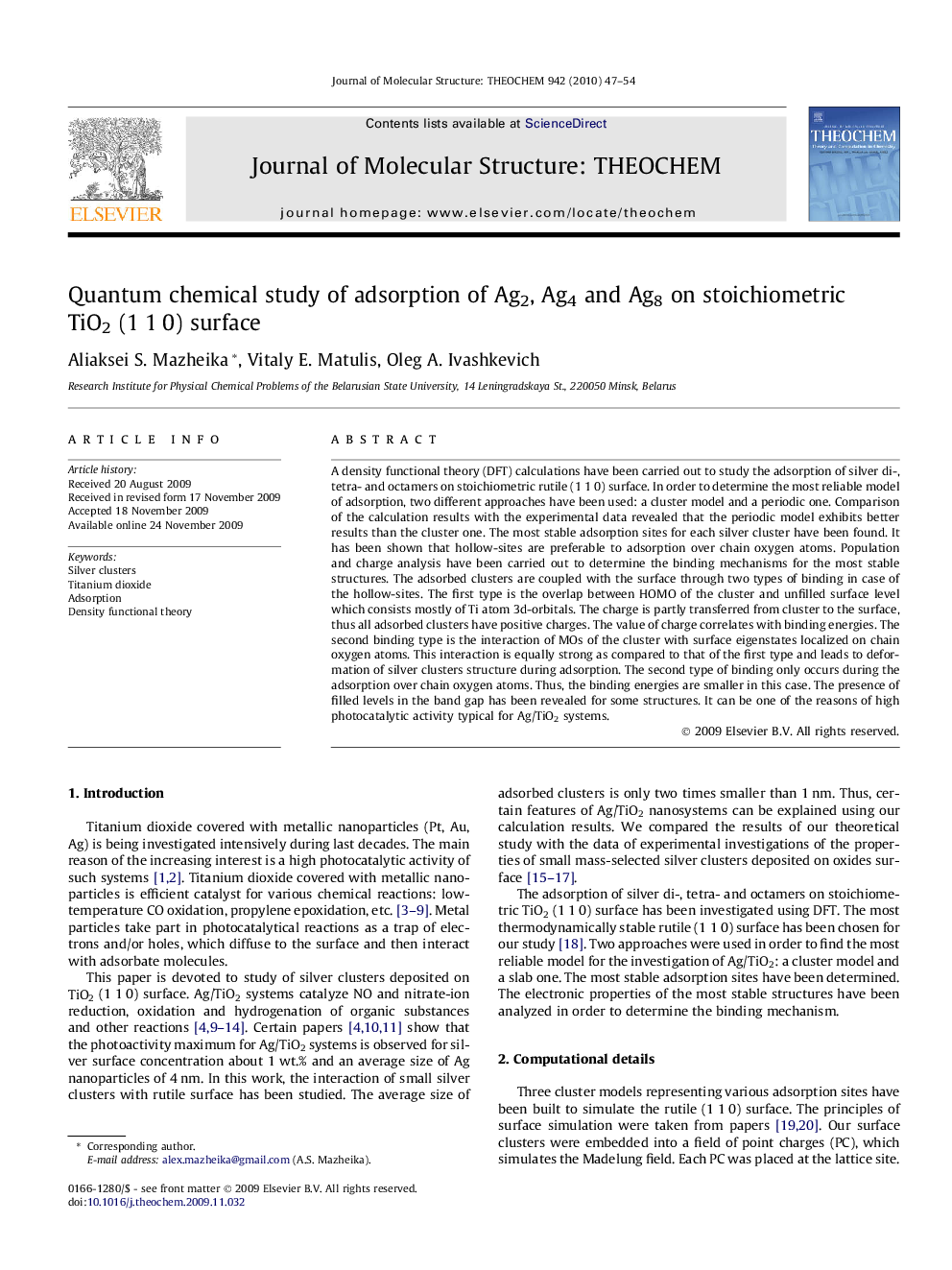| Article ID | Journal | Published Year | Pages | File Type |
|---|---|---|---|---|
| 5416629 | Journal of Molecular Structure: THEOCHEM | 2010 | 8 Pages |
Abstract
A density functional theory (DFT) calculations have been carried out to study the adsorption of silver di-, tetra- and octamers on stoichiometric rutile (1Â 1Â 0) surface. In order to determine the most reliable model of adsorption, two different approaches have been used: a cluster model and a periodic one. Comparison of the calculation results with the experimental data revealed that the periodic model exhibits better results than the cluster one. The most stable adsorption sites for each silver cluster have been found. It has been shown that hollow-sites are preferable to adsorption over chain oxygen atoms. Population and charge analysis have been carried out to determine the binding mechanisms for the most stable structures. The adsorbed clusters are coupled with the surface through two types of binding in case of the hollow-sites. The first type is the overlap between HOMO of the cluster and unfilled surface level which consists mostly of Ti atom 3d-orbitals. The charge is partly transferred from cluster to the surface, thus all adsorbed clusters have positive charges. The value of charge correlates with binding energies. The second binding type is the interaction of MOs of the cluster with surface eigenstates localized on chain oxygen atoms. This interaction is equally strong as compared to that of the first type and leads to deformation of silver clusters structure during adsorption. The second type of binding only occurs during the adsorption over chain oxygen atoms. Thus, the binding energies are smaller in this case. The presence of filled levels in the band gap has been revealed for some structures. It can be one of the reasons of high photocatalytic activity typical for Ag/TiO2 systems.
Related Topics
Physical Sciences and Engineering
Chemistry
Physical and Theoretical Chemistry
Authors
Aliaksei S. Mazheika, Vitaly E. Matulis, Oleg A. Ivashkevich,
